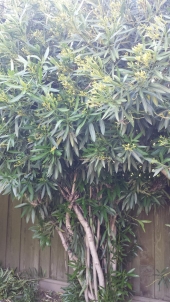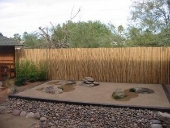posted 10 years ago
I was pleased to find out oleander mulch on a pine tree made it healthier than the ones around it.
I tried to take out a large mature oleander and had to cut it down to the ground, so I had several truckloads of cuttings. I piled them at the base of a pine tree that I never thought I would go near, it didn't matter what happened to the cuttings or the tree. But, of course, when you try to find an out-of-the-way place it ends up being exactly where you eventually need to do something.
The pile of oleander cuttings was 10 feet high to start with, not a dense pile, but it was a lot. Nothing else in it, I wasn't trying to compost it. The pile shrunk and shrunk until I almost couldn't tell it was there. Then years of drought happened and all the pine trees around it were showing stress, except that one. That one had more growth and fewer dead needles. There was no extra water from me anywhere near this spot.
I wouldn't think it's a good idea to put it on vegetables, but I will use cuttings on landscape in the future.
Mediterranean climate, hugel trenches, fabulous clay soil high in nutrients, self-watering containers with hugel layers, keyhole composting with low hugel raised beds, thick Back to Eden Wood chips mulch (distinguished from Bark chips), using as many native plants as possible....all drought tolerant.







